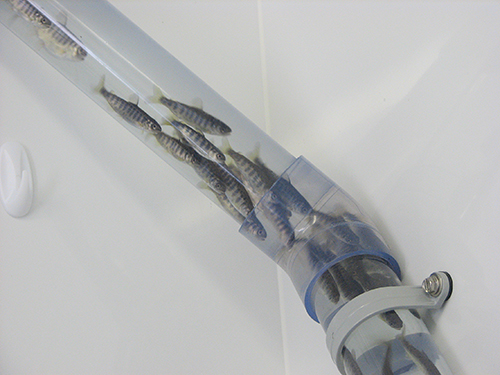Fisheries Management: Working to sustain the resource
Fisheries of the Great Lakes are managed by provincial, state, and tribal agencies, with support from the Canadian and U. S. federal governments. Management of Great Lakes fisheries occurs cooperatively for fish populations that support recreational, commercial, or subsistence fisheries or support having a well-balanced and productive fish community. Fishery management agencies agreed in 1981 to cooperate through a non-binding agreement called A Joint Strategic Plan for Management of Great Lakes Fisheries. The Great Lakes Fishery Commission facilitates this  process by maintaining working relationships among the parties. Four important principles guide this cooperative fishery management process: consensus, accountability, information sharing; and ecosystem-based management.
Fishery management happens for each lake through "lake committees" comprised of state, provincial, and U.S. tribal agencies with primary management jurisdiction on each lake, supported by federal agencies. Lake committees develop strategic fishery management goals for each lake, called Fish Community Objectives (FCOs) and set agreed-upon harvest levels for key fish species of common interest. More detailed management guidance is provided through rehabilitation plans and management plans for each lake. Lake committees also provide a "state-of-the-lake" report every five years to summarize recent trends in fish populations and progress toward FCOs. Mutually agreed-upon management actions are implemented by individual agencies.
process by maintaining working relationships among the parties. Four important principles guide this cooperative fishery management process: consensus, accountability, information sharing; and ecosystem-based management.
Fishery management happens for each lake through "lake committees" comprised of state, provincial, and U.S. tribal agencies with primary management jurisdiction on each lake, supported by federal agencies. Lake committees develop strategic fishery management goals for each lake, called Fish Community Objectives (FCOs) and set agreed-upon harvest levels for key fish species of common interest. More detailed management guidance is provided through rehabilitation plans and management plans for each lake. Lake committees also provide a "state-of-the-lake" report every five years to summarize recent trends in fish populations and progress toward FCOs. Mutually agreed-upon management actions are implemented by individual agencies.
Fishery managers cooperatively manage fisheries in the Great Lakes by stocking predator fishes like salmon and trout, by regulating harvest, and by effective enforcement of fishing regulations. Increasingly, fishery managers are interested in improving the quality of habitat for better production of Great Lakes fishes through several collaborative processes, including the Great Lakes Water Quality Agreement and its Lakewide Action and Management Plans.
Cooperative fishery management is necessary to maintain stable harvest of recreationally and commercially important fish populations throughout the Great Lakes because most fish move across state, provincial, and tribal boundaries. Each lake committee actively determines recommended courses of action related to harvest, stocking, and habitat improvement. For example, the Lake Erie Committee works annually to set allowable catches of recreationally and commercially important walleye and yellow perch. The Great Lakes fishery is worth more than $5.1 billion annually and wise cooperative fishery management sustains that economically and socially important element of Great Lakes ecosystems.
_SMALL.jpg)

